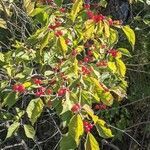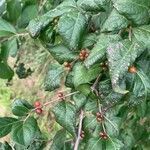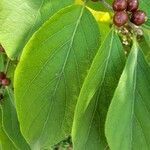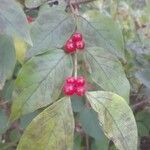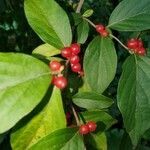A shrub or small tree. It develops suckers. It loses its leaves during the year. The twigs are light brown and ridged. The leaves are oval and 4-10 cm long. They are finely toothed. The leaves are dark green above and hairy underneath. The flowers are in small clusters in the axils of leaves. The fruit are berry like. They are red or orange and 5-8 mm across.
